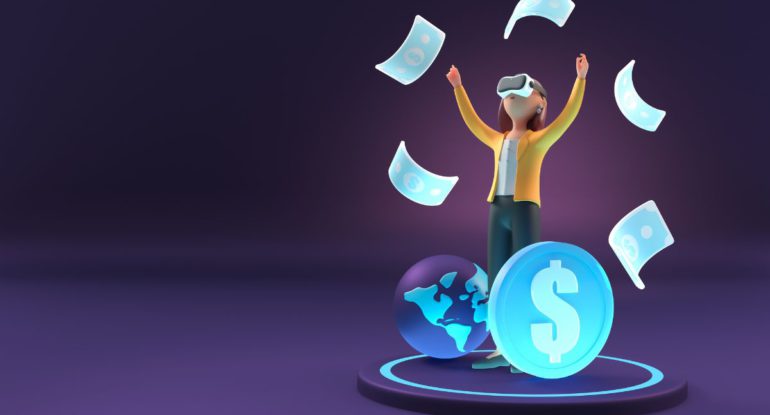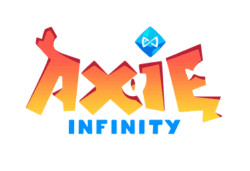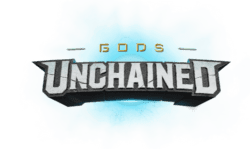Are NFTs The Future Of Blockchain Gaming. Top 10 Ways NFTs Are Making Money For Blockchain Gaming

Non-Fungible Tokens (NFTs) are digital assets that represent ownership or proof of authenticity of a unique item or piece of content, typically using blockchain technology. Unlike cryptocurrencies such as Bitcoin or Ethereum, which are fungible and can be exchanged on a one-to-one basis, NFTs are distinct and cannot be exchanged on an equal basis. Each NFT has a unique identifier, metadata, and a verifiable record of ownership, making it different from any other token.
The concept of NFTs gained significant popularity in 2017 with the emergence of CryptoKitties, a blockchain-based game where users could collect, breed, and trade unique virtual cats. Since then, NFTs have expanded to encompass a wide range of digital assets, including artwork, music, videos, virtual real estate, virtual goods in games, and more.
NFTs are built on blockchain technology, most commonly using Ethereum’s blockchain, although other blockchains like Binance Smart Chain and Flow have also gained traction for hosting NFTs. The blockchain provides a decentralized and transparent ledger that ensures the uniqueness, ownership, and transaction history of each NFT. It enables creators to mint NFTs, define their properties, and establish rules for their ownership and transfer.
One of the key features of NFTs is their ability to represent ownership of digital assets that were previously difficult to monetize or prove authenticity for. Before NFTs, digital files could be easily copied and shared without any way to prove ownership or establish scarcity. With NFTs, artists, creators, and collectors can assign value to unique digital creations and establish provable ownership.
When an artist or creator mints an NFT, they typically attach metadata to it, including details about the artwork or item, the creator’s information, and sometimes additional content like multimedia files. This metadata helps provide context and provenance to the NFT. Once minted, the NFT can be bought, sold, or traded on various NFT marketplaces, both primary and secondary. Primary sales occur directly from the creator to the buyer, while secondary sales involve the transfer of ownership from one individual to another, often with the original creator receiving a percentage of the sale value as a royalty fee.
NFTs have gained significant attention due to several high-profile sales and endorsements by artists, musicians, and celebrities. Notable examples include digital artist Beeple’s artwork “Everydays: The First 5000 Days” selling for $69 million, Twitter CEO Jack Dorsey’s first tweet being sold as an NFT for over $2.9 million, and musician Grimes selling digital artworks and music-related NFTs for millions of dollars.
Critics of NFTs argue that they contribute to the energy consumption and carbon footprint of blockchain networks, particularly those using proof-of-work consensus algorithms like Ethereum. Additionally, concerns have been raised regarding the potential for plagiarism or unauthorized use of NFT-protected content.
Despite the controversies and debates surrounding NFTs, they have opened up new opportunities for artists, creators, and collectors to engage with the digital economy, establish ownership rights, and explore novel monetization models for digital content. The long-term impact and evolution of NFTs are still unfolding as the technology continues to develop and more use cases emerge.
What is Blockchain gaming?
Blockchain gaming refers to the integration of blockchain technology into video games, creating a new paradigm for how games are developed, played, and monetized. It combines the features of traditional gaming with the decentralized and transparent nature of blockchain, enabling players to have true ownership and control over in-game assets.
At its core, blockchain gaming leverages the properties of blockchain, such as immutability, transparency, and security, to enhance various aspects of gaming. Here are some key elements of blockchain gaming:
1. Ownership of In-Game Assets: In traditional games, players do not truly own the virtual assets they acquire within the game. However, with blockchain gaming, in-game assets, often represented as non-fungible tokens (NFTs), are stored on the blockchain, giving players provable ownership. These assets can be traded, sold, and used across multiple games, creating a player-driven economy.
2. Interoperability and Cross-Platform Support: Blockchain gaming allows for interoperability between different games and platforms. Since the assets are stored on the blockchain, players can use their assets across multiple games or even outside of gaming environments. This cross-platform support opens up new possibilities for asset utilization and value creation.
3. Transparent and Secure Transactions: Blockchain technology ensures transparency and security in transactions within the gaming ecosystem. Every transaction is recorded on the blockchain, providing a verifiable and tamper-proof history of asset ownership, transfers, and trades. This transparency helps combat fraud, counterfeit items, and unfair practices that may occur in traditional gaming.
4. Play-to-Earn Mechanics: Blockchain gaming introduces the concept of play-to-earn, where players can earn real-world value through their in-game activities. By acquiring rare or valuable assets, players can sell them to other players or on NFT marketplaces, earning cryptocurrencies or other rewards. This incentivizes engagement and skill development within the game.
5. Community Governance: Blockchain-based games often incorporate decentralized governance models, allowing players to have a say in the development, rules, and direction of the game. Through decentralized autonomous organizations (DAOs), players can vote on proposals, participate in decision-making processes, and collectively shape the game’s future.
6. Unique Game Mechanics: Blockchain technology enables the implementation of unique game mechanics that were previously not feasible. For example, blockchain-based games can introduce provable fairness in gameplay, verifiable scarcity of assets, decentralized tournaments with transparent prize pools, and player-driven content creation.
7. Funding and Crowdfunding: Blockchain gaming has also revolutionized game funding models. Developers can utilize initial coin offerings (ICOs) or initial NFT offerings (INOs) to raise funds directly from the community. This decentralized crowdfunding approach allows developers to gather support and resources without relying solely on traditional publishing or investment models.
While blockchain gaming offers several advantages, it also faces challenges, including scalability, user experience, and the environmental impact of energy-intensive blockchains. However, ongoing technological advancements and the development of more scalable and eco-friendly blockchain solutions aim to address these limitations.
Overall, blockchain gaming represents an innovative approach to game development, empowering players with true ownership, economic opportunities, and community-driven experiences. It has the potential to reshape the gaming industry and redefine the relationship between players, developers, and the virtual worlds they inhabit.
💸STAR ATLAS ($ATLAS) TOKEN ANALYSIS💸
Dive into the world of @staratlas
🚀 where blockchain meets gaming!
Immerse yourself in a player-driven metaverse🌌
own unique NFT assets, and join a visionary team
pioneering the future of gaming 🎮1/2🧵 pic.twitter.com/mZZhdsvzJN
— X100 – Community Hub for Metaverse-projects (@x100gg) June 14, 2023
How are NFTs and Blockchain gaming related?
NFTs (Non-Fungible Tokens) and blockchain gaming are closely intertwined, with NFTs playing a crucial role in revolutionizing ownership, economy, and gameplay within the gaming industry. The integration of NFTs into blockchain gaming has brought about new possibilities and experiences for players, developers, and the gaming ecosystem as a whole. Here’s a detailed exploration of the relationship between NFTs and blockchain gaming:
1. Ownership of In-Game Assets: NFTs enable true ownership of in-game assets. In traditional gaming, players don’t have complete ownership over the virtual items they acquire. However, with NFTs, game developers can create unique digital assets as tokens on the blockchain. Each NFT represents a specific in-game item, character, or asset and has a distinct identifier, ownership record, and properties. This means that players have provable ownership and control over their NFT-based assets, which can be bought, sold, traded, or transferred independently of the game itself.
2. Interoperability and Cross-Game Asset Utilization: NFTs facilitate interoperability and cross-game asset utilization. Since NFTs are built on blockchain technology, they can be transferred and used across different games, platforms, and virtual worlds that support the same NFT standards. For instance, an NFT sword earned in one game can be used in another compatible game that recognizes and accepts that specific NFT standard. This interoperability gives players the ability to leverage their assets across multiple gaming experiences, enhancing the value, utility, and versatility of their digital possessions.
3. Player-Driven Economies: The integration of NFTs in blockchain gaming has led to the emergence of player-driven economies. With NFTs representing unique and scarce digital assets, players can freely trade, buy, and sell their NFTs with other players. This creates a dynamic marketplace where players can monetize their time, effort, and skills by capitalizing on the value and rarity of their NFT-based assets. The decentralized nature of blockchain gaming empowers players to actively participate in shaping the economy, supply, and demand of virtual items, providing new avenues for entrepreneurship and income generation within gaming communities.
4. Provably Scarcity and Authenticity: NFTs bring provable scarcity and authenticity to digital assets within blockchain gaming. Through the blockchain’s transparent and immutable ledger, the rarity and uniqueness of NFTs can be verified. Unlike traditional digital assets that can be easily duplicated, NFTs provide a trustless system where players can be assured of the scarcity and originality of the assets they own or acquire. This adds a layer of value and prestige to NFT-based items, increasing their desirability and status within the gaming community.
5. Play-to-Earn Mechanics: NFTs enable play-to-earn mechanics, allowing players to earn real-world value through their in-game activities. By accumulating rare or valuable NFTs, players can sell them to other players or on NFT marketplaces, earning cryptocurrencies or other forms of rewards. This introduces a paradigm shift where gaming becomes a means of generating income and rewards, blurring the line between work and play. Players are incentivized to engage more deeply with the game, invest time and effort into acquiring valuable assets, and monetize their gaming experiences.
6. Community Engagement and Governance: Blockchain gaming often incorporates decentralized governance models, leveraging blockchain’s decentralized autonomous organizations (DAOs). Through DAOs, players can participate in decision-making processes, propose changes, and collectively govern various aspects of the game. NFT ownership can grant voting rights within the DAO, giving players a say in the development, rules, and direction of the game. This fosters community engagement, strengthens player-developer relationships, and creates a sense of ownership and influence within the gaming ecosystem.
7. Digital Collectibles and Personalization: NFTs enable the creation and collection of digital assets that hold sentimental or artistic value. In blockchain gaming, these digital collectibles can take various forms, including virtual pets, unique character skins, rare virtual items, or exclusive artwork. NFTs provide a mechanism to prove ownership and scarcity of these digital collectibles, allowing players to express their individuality, showcase their collections, and engage in social interactions within the gaming community.
8. Funding and Crowdfunding: NFTs have revolutionized game funding models, allowing developers to raise funds directly from the community. Through initial NFT offerings (INOs) or NFT sales, developers can sell exclusive NFTs or limited edition items, generating revenue to support game development. This decentralized crowdfunding approach empowers developers to directly engage with players, build a dedicated community, and gather resources for game development, bypassing traditional publishing or investment models.
The integration of NFTs in blockchain gaming holds immense potential to reshape the gaming industry, redefine ownership and value, empower players, and foster innovative economic models. By combining the transparency, security, and decentralized nature of blockchain technology with the concept of true ownership and tradability, NFTs have become a driving force in shaping the future of gaming.
Also read: How Blockchain and NFTs are changing the world of gaming industry
Importance of NFTs for the Future of Blockchain gaming
NFTs (Non-Fungible Tokens) hold significant importance for the future of blockchain gaming, as they bring a range of benefits and opportunities that have the potential to revolutionize the gaming industry. Here are key reasons why NFTs are crucial for the future of blockchain gaming:
1. True Ownership: NFTs introduce the concept of true ownership to the gaming world. In traditional gaming, players do not have real ownership over the virtual assets they acquire. NFTs change this by utilizing blockchain technology to create unique digital assets that players can own and control. Each NFT has a distinct identifier and ownership record stored on the blockchain, ensuring transparency and immutability. This empowers players to buy, sell, and trade their NFTs with a provable sense of ownership, enhancing player engagement and investment in the virtual worlds they inhabit.
2. Digital Scarcity and Rarity: NFTs enable the creation of scarce and rare digital assets. Through the use of blockchain, developers can establish limited supplies of NFTs, ensuring their scarcity. This scarcity increases the perceived value and desirability of these assets among players. The ability to prove the scarcity and rarity of virtual items through NFTs provides a new dimension of value in gaming, enabling players to collect, trade, and showcase unique and sought-after digital possessions.
3. Play-to-Earn Mechanics: NFTs introduce play-to-earn mechanics, where players can earn real-world value through their in-game activities. By acquiring valuable NFTs, players can sell them to other players or on NFT marketplaces, earning cryptocurrencies or other rewards. This allows players to monetize their time and skills spent in the game, creating economic opportunities within the gaming ecosystem. Play-to-earn mechanics incentivize engagement, skill development, and a sense of ownership, bridging the gap between gaming and real-world value creation.
4. Cross-Platform Compatibility: NFTs facilitate cross-platform compatibility, allowing players to use their virtual assets across multiple games and platforms. Since NFTs are built on blockchain technology, they can be easily transferred and utilized in any game or application that supports the same NFT standards. This interoperability opens up new possibilities for players, enabling them to leverage their assets and achievements in different gaming environments, enhancing the overall gaming experience and providing flexibility and continuity across platforms.
5. Decentralized Marketplaces: NFTs enable the creation of decentralized marketplaces for virtual assets. With NFTs, players can trade their digital items directly with other players, removing the need for centralized intermediaries. This decentralized marketplace model empowers players, eliminates restrictions imposed by game publishers, and enables free and transparent transactions. It also allows for a global marketplace where players from different games and platforms can connect, fostering a vibrant and diverse gaming economy.
6. Player-Driven Economy and Content Creation: NFTs facilitate the emergence of player-driven economies and content creation within the gaming ecosystem. Players can create and sell their own NFTs, such as in-game items, artwork, or virtual experiences, directly to other players. This empowers players to become creators and entrepreneurs, blurring the line between players and developers. It also encourages innovation, diversity, and community-driven content creation, resulting in richer and more engaging gaming experiences.
7. Community Engagement and Governance: NFTs promote community engagement and governance within blockchain gaming. Through decentralized autonomous organizations (DAOs), players can participate in decision-making processes, vote on proposals, and shape the development and direction of the game. NFT ownership can grant voting rights or other privileges within the DAO, providing players with a sense of ownership, influence, and community involvement. This fosters a stronger bond between players and developers, leading to more inclusive and player-centric gaming experiences.
8. Intellectual Property Protection
: NFTs offer enhanced intellectual property protection for game developers, artists, and content creators. By utilizing blockchain technology, creators can prove ownership and authenticity of their digital assets, preventing unauthorized duplication or counterfeit. NFTs provide a robust solution for creators to monetize their work, ensuring fair compensation and protection of their intellectual property rights.
In conclusion, NFTs play a vital role in shaping the future of blockchain gaming. They empower players with true ownership, enable play-to-earn mechanics, create cross-platform compatibility, foster decentralized marketplaces, drive community engagement, and provide enhanced intellectual property protection. The integration of NFTs unlocks new possibilities, economic opportunities, and immersive experiences for players, developers, and the gaming industry as a whole.
Also read: Blockchain and NFTs Bring Latest Trends The Future of Gaming
Top 10 ways NFTs are making money for Blockchain gaming
Non-fungible tokens (NFTs) are revolutionizing the gaming industry, and blockchain gaming is at the forefront of this innovation. NFTs allow players to own and trade in-game assets, which has created a new way for gamers to make money.
Here are the top 10 ways NFTs are making money for blockchain gaming:
- Selling in-game assets. Players can sell their in-game assets, such as weapons, skins, and characters, as NFTs. This allows them to recoup the cost of their purchases and even make a profit.

- Earning rewards. Some blockchain games reward players with NFTs for completing quests, winning matches, or other in-game achievements. This gives players an incentive to keep playing and to improve their skills.

- Staking. Players can stake their NFTs to earn rewards, such as cryptocurrency or in-game items. This is a passive way for players to earn money from their NFTs.

- Participating in airdrops. Some blockchain games airdrop NFTs to their players. This is a way for the developers to reward their players and to promote the game.
- Minting NFTs. Players can mint their own NFTs, such as artwork, music, or videos. This gives them the opportunity to create and sell their own digital assets.

- Participating in tournaments. Some blockchain games host tournaments where players can compete for prizes, such as NFTs. This is a way for players to test their skills and to win valuable prizes.

- Lending NFTs. Players can lend their NFTs to other players for a fee. This is a way for players to earn money from their NFTs without having to sell them.

- Selling NFTs as collectibles. Some players collect NFTs as a hobby or as an investment. This is a way for players to own rare and unique digital assets.

- Using NFTs as tickets. Some blockchain games use NFTs as tickets to events or tournaments. This is a way for players to prove their ownership of tickets and to prevent fraud.
- Using NFTs as proof of ownership. NFTs can be used to prove ownership of digital assets, such as land in the metaverse. This is a way for players to own real estate in the metaverse and to trade it with other players.
These are just a few of the ways that NFTs are making money for blockchain gaming. As the industry continues to grow, we can expect to see even more innovative ways for players to make money from their NFTs.
Here are some additional benefits of using NFTs in blockchain gaming:
- Transparency: NFTs are recorded on a blockchain, which makes them transparent and immutable. This means that players can be sure that they own their NFTs and that they cannot be counterfeited.
- Security: NFTs are stored on a blockchain, which makes them secure from hacking and theft. This gives players peace of mind knowing that their NFTs are safe.
- Interoperability: NFTs can be transferred between different blockchains, which means that players can use them in different games. This gives players more flexibility and choice.
Overall, NFTs are a powerful new technology that has the potential to revolutionize the gaming industry. By providing players with ownership and control over their in-game assets, NFTs are creating a new way for gamers to make money and to enjoy their games.
Future of Blockchain gaming and NFTs
The future of blockchain gaming is closely intertwined with the use of NFTs (Non-Fungible Tokens), as these digital assets have the potential to revolutionize the gaming industry in various ways. Here’s a detailed exploration of the future of blockchain gaming and the role of NFTs:
1. Enhanced Ownership and Value: NFTs will continue to provide players with enhanced ownership and value over virtual assets. As blockchain technology becomes more mainstream and user-friendly, players will have greater control over their in-game items, characters, and achievements through NFTs. This increased ownership will fuel player engagement, investment, and dedication to the virtual worlds they participate in.
2. Cross-Platform Integration: The future of blockchain gaming will witness the seamless integration of NFTs across multiple gaming platforms and virtual environments. NFT standards will evolve, enabling players to utilize their digital assets in different games and experiences, regardless of the underlying blockchain technology used. This cross-platform integration will enhance the interoperability and continuity of player experiences, allowing for more diverse and immersive gaming ecosystems.
3. Dynamic In-Game Economies: NFTs will continue to drive the development of player-driven economies within blockchain gaming. Players will actively engage in trading, buying, and selling NFT-based assets, forming decentralized marketplaces where the value of digital items is determined by supply and demand. This economic model will create new opportunities for players to monetize their skills, time, and investments within the gaming ecosystem.
4. Play-to-Earn and Tokenized Rewards: The concept of play-to-earn will gain further traction in blockchain gaming. Players will be able to earn NFTs or cryptocurrency rewards by participating in gameplay, achieving milestones, or contributing to the community. NFTs will serve as tangible representations of in-game accomplishments, enabling players to convert their virtual success into real-world value. This paradigm shift will redefine the relationship between players, developers, and the value generated within gaming environments.
5. Integration with Virtual Reality (VR) and Augmented Reality (AR): The convergence of blockchain gaming with virtual reality and augmented reality technologies will unlock new dimensions of immersion and interactivity. NFTs will play a crucial role in bridging the gap between virtual and physical worlds, allowing players to own and trade virtual assets that seamlessly integrate with their real-world surroundings. This integration will enhance the social, collaborative, and experiential aspects of blockchain gaming.
6. Collectibles and Personalization: NFT-based collectibles will continue to thrive, offering players unique and scarce virtual items that hold sentimental or artistic value. The future of blockchain gaming will witness the emergence of highly sought-after digital collectibles, artwork, and customized assets that players can own, display, and trade. This will fuel creativity, self-expression, and a sense of individuality within gaming communities.
7. Collaboration and Co-Creation: Blockchain gaming will foster greater collaboration and co-creation between players and developers. NFTs will enable players to contribute to the development of the game’s storyline, characters, or virtual assets, leading to more immersive and community-driven experiences. Developers will leverage the input and creativity of the player community, leveraging decentralized governance models to shape the future of their games.
8. Licensing and Intellectual Property Protection: NFTs will play a significant role in licensing and protecting intellectual property within blockchain gaming. Game developers and content creators will have the ability to tokenize their creations, ensuring secure ownership, authenticity, and traceability. This will lead to new revenue streams, collaborations, and partnerships within the gaming industry, as well as provide a means to combat unauthorized use or infringement of intellectual property.
9. Integration of DeFi and Gaming: The integration of decentralized finance (DeFi) protocols with blockchain gaming will expand the financial opportunities and incentives for players. NFTs can serve as collateral
within DeFi platforms, allowing players to borrow, lend, or trade their digital assets for financial gain. This intersection of DeFi and gaming will bring new economic models, investment mechanisms, and liquidity to the gaming ecosystem.
10. Enhanced Community Engagement: NFTs will strengthen community engagement within blockchain gaming. Players will have a vested interest in the success of the games they participate in, as their ownership of NFTs directly impacts their in-game experiences and economic opportunities. This will foster a sense of community, loyalty, and active participation, leading to vibrant and thriving gaming communities.
In conclusion, the future of blockchain gaming will be shaped by the integration and advancements of NFTs. The use of NFTs will revolutionize ownership, value, economies, and experiences within gaming environments, empowering players and creating new possibilities for developers, artists, and content creators. As blockchain technology continues to evolve and gain widespread adoption, the potential for innovative, immersive, and economically vibrant blockchain games will only grow.



























































